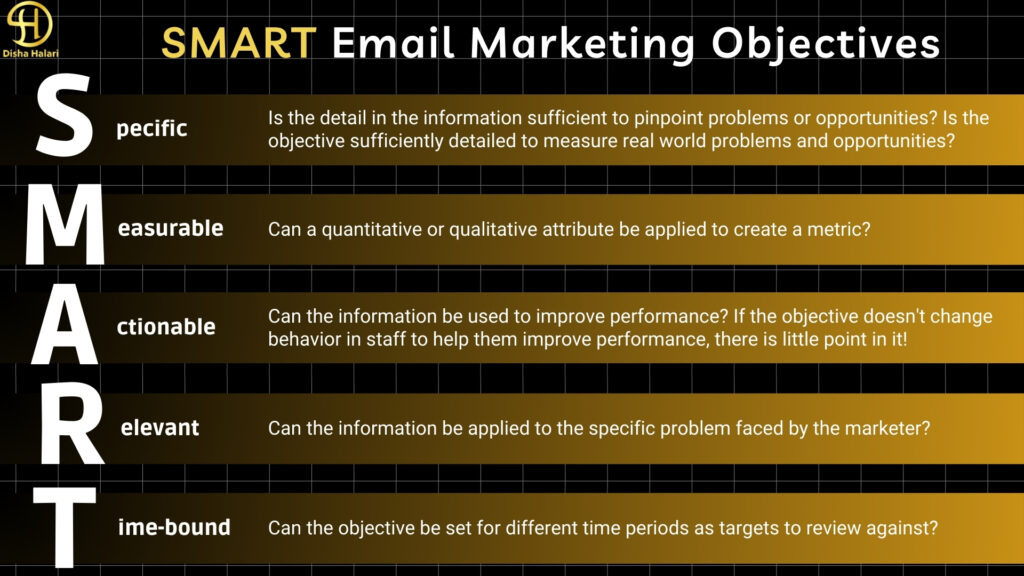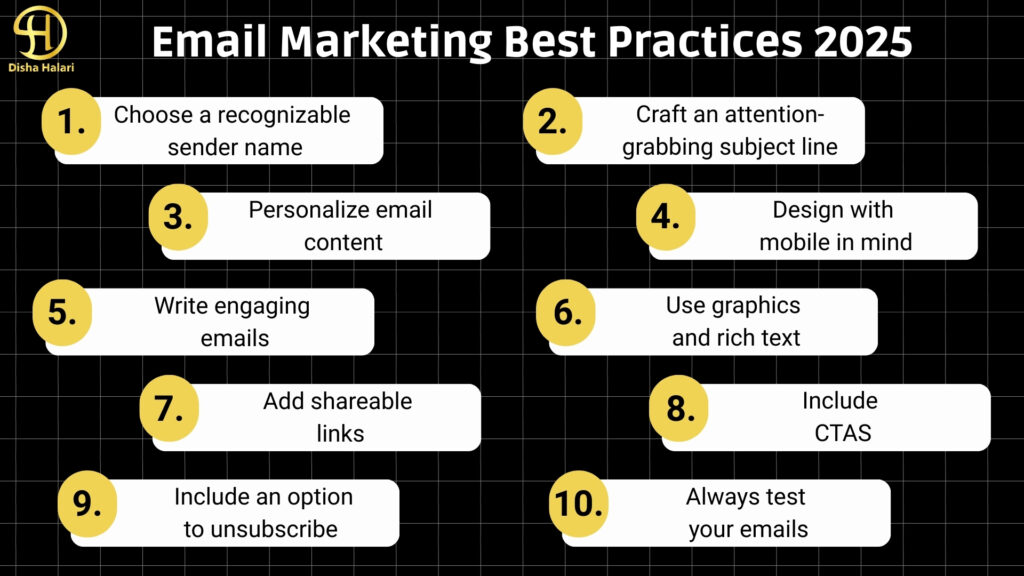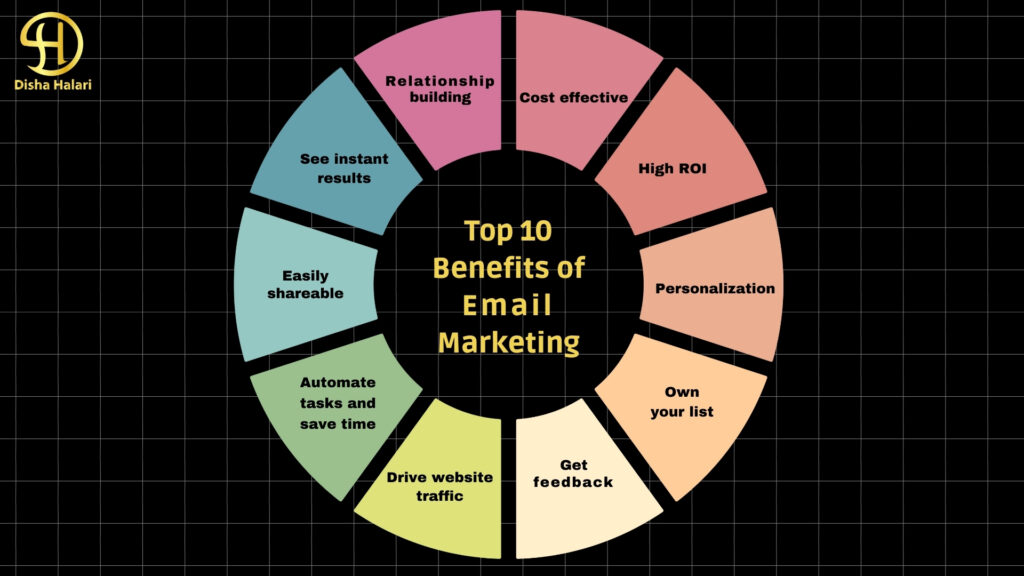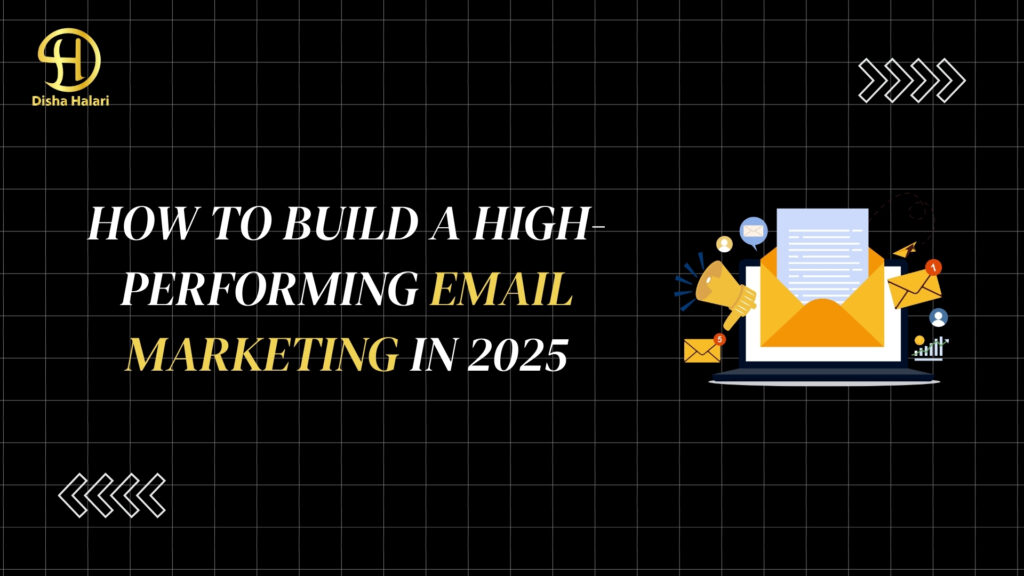Table of Contents
ToggleIntroduction: How to Build a High-Performing Email Marketing in 2025
Let’s be real—emails not going anywhere. In 2025, it’s still one of the most reliable tools for brands wanting real results. But the inbox is a busy place. To truly stand out, you need more than just catchy subject lines. You need a High Performing Email Marketing game plan that blends strategy, smart tools, and human connection.
So, what is email marketing today? It’s evolved into something way more dynamic than newsletters. Knowing how to build email marketing that actually works means focusing on your audience’s needs, not just your goals. You’ll need to use the right email marketing tools, follow updated email marketing best practices 2025, and track what’s really clicking with your audience.
Throughout this guide, we’ll cover the importance of email marketing, how to craft campaigns people want to open, and ways to boost results with solid email campaign marketing techniques. We’ll also talk about email marketing benefits you may not be using to full potential—and simple ways on how to improve email conversion rate without overcomplicating things.
Stick around—let’s make your email strategy not just better, but smarter
What Is Email Marketing and Why It Still Matters in 2025
Okay, so… quick question: when was the last time you actually opened an email from a brand? If it caught your attention, chances are, it wasn’t just noise—it was something useful or interesting, right? That’s email marketing today. Or at least it should to work like that.
A lot of people still ask, what is email marketing exactly? It’s not blasting offers anymore. It’s more like checking in with your audience, sharing stuff they actually care about. Whether it’s a quick tip, a new launch, or just a reminder—you’re popping up in a space they’ve invited you into. And that’s kind of huge.
See, the importance of email marketing hasn’t gone anywhere. In fact, it’s grown. With everything shifting constantly on social media, email stays stable. You’re not renting space—you own it.
A strong email marketing strategy in 2025 is less about sales, more about realness. When you focus on how to build email marketing that feels human, it clicks. Literally.
That’s why high-performing email marketing still wins. It’s not about trends. It’s about connection.
Why You Need a High Performing Email Marketing Plan in 2025
Okay, let’s talk about this: in 2025, just shooting out a random email every once in a while? That’s not going to cut it anymore. If you want real, solid results with your email marketing, you gotta have a plan. A plan that actually works.
Email is personal. When someone opens your email, they’ve invited you into their space. So, if you’re not offering value or sharing something that resonates, they’ll just hit unsubscribe faster than you can say “high-performing email marketing.”
So, why does it matter? Well, think about it: email isn’t like social media where you post something and hope people see it. With email, you get to send messages straight to their inboxes—if you’re doing it right. That’s why having a strong email marketing strategy is so important. It’s not about pushing products all the time—it’s about having a real conversation with your audience.
Without a plan, you’re kind of just guessing. You might get lucky once or twice, but you can’t build something sustainable without a strategy that focuses on your audience’s needs, not just your brand’s goals. A high-performing email marketing plan doesn’t just drive sales; it builds relationships.
How to Build Email Marketing That Delivers Results
Alright, let’s be honest—most emails? People just scroll past them. So, if you’re trying to figure out how to build email marketing that actually does something, here’s the secret: stop thinking like a marketer and start thinking like a human.
The first thing you need? A clean, healthy email list. No one likes being ghosted by outdated addresses or people who don’t even remember signing up. Trim the list. Quality beats quantity every time.
Next, talk like you’re writing to a friend. Seriously. Nobody wants a robotic “Dear valued customer” kind of vibe anymore. Write like it’s personal—because it should be. Use their name. Segment your list. Send stuff that feels made just for them. That’s how email campaign marketing turns into results.
Oh—and your subject line? Make it count. The rest won’t matter if it fails to capture them. Also, don’t forget the CTA (but make it feel helpful, not pushy).
Want your email marketing strategy to work in 2025? Then build it around real conversations, not just campaigns. That’s what makes high-performing email marketing feel human—and that’s what drives action.
Crafting a Smart Email Marketing Strategy for Modern Audiences
Let’s face it—today’s audience isn’t sitting around waiting for another generic newsletter. They are looking for timely, relevant, and possibly quite entertaining content. So if you’re wondering how to create a smart email marketing strategy that clicks with real people, not just inboxes, here’s the trick: listen more, sell less.
Start by knowing your audience. Not just their age or location—but their vibe. What do they care about? What frustrates them? What would make them smile at 9am on a Monday when your email hits their phone?
A smart strategy in 2025 means using data without sounding like a robot. Segment your list by interests or behaviors. Personalize based on past actions. And use email marketing tools that help automate without killing the human touch.
Also, don’t be afraid to test stuff. Try different tones. Play with subject lines. A/B test your calls-to-action. This is where high performing email marketing starts to shine—it adapts.
If your emails feel like conversations instead of campaigns, that’s when your strategy’s working. Being genuine is more important than being faultless.

Top Email Marketing Tools to Use in 2025 for Maximum ROI
Choosing the right email tool in 2025 can feel like scrolling endlessly through streaming apps—you’ve got tons of options, but which one’s actually worth it? In actuality, there isn’t only one “best” tool. It’s all about what fits you.
If you’re just starting out or working solo, something like Mailer Lite or Flo desk is super beginner-friendly. You can set up a great-looking email without getting stuck in tech stuff. For folks who want more automation and tracking, I’ve seen a lot of people swear by Active Campaign. It’s got that smart logic setup where your emails react to what users do (or don’t do).
Creators and writers tend to lean toward Convert Kit. It’s not flashy, but it’s made for connection—not just campaigns. And if you’re running a big operation with a team? HubSpot might be your jam, though it’s definitely more of an investment.
Just keep in mind that the tool you will truly utilize is the “best” one. Start small, experiment, and focuses on outcomes rather than features.
Email Campaign Marketing: Planning, Targeting & Automation Tips
You’ve got an email list—now, what’s next? If you’re just sending out emails with no strategy, you’re probably wasting a lot of potential. Email campaign marketing works when you put in the time to plan, target the right people, and automate some of the process.
First things first: targeting. You’re going missing if you send the same email to everyone. Break your list into smaller groups based on things like past purchases or how often they open your emails. Your emails will be more effective if they are more topical to your target audience.
Now let’s talk about planning. It’s all about knowing why you’re emailing in the first place. Are you looking to get people to shop your new collection, or maybe just get them excited about upcoming content? Whatever it is, make sure your email has a clear goal and a strong call-to-action (CTA). Keep it focused.
Finally, there’s the magic of automation. You don’t need to hit send every time. Set up a few automated flows—like a welcome email for new subscribers or a reminder for those who didn’t finish their checkout. Once it’s set up, you can rest easy while automation works its magic.
By taking the time to plan, target effectively, and let automation help out, your email campaigns will stop being a shot in the dark and start driving real results.
Email Marketing Best Practices 2025: What Works Now
By 2025, email marketing has definitely evolved, and what worked a few years ago just doesn’t cut it anymore. So, what should you be doing to stay ahead? Let’s dive into what’s really working in the world of email marketing today.
First up: personalization. Generic, one-size-fits-all emails are a thing of the past. People expect emails that speak to them directly. It’s more than just slapping their name at the top. Personalization means offering content that’s tailored to what they like or have bought before. Maybe they’ve shown interest in a product, so send them a personalized recommendation. Small touches go a long way.
Then there’s segmentation. You can’t send the same email to your entire list and expect great results.In fact, separate your audience into smaller categories. Whether it’s based on location, past purchases, or how often they open your emails, segmentation helps you send relevant content to each group. And relevant content? It gets clicks.
Don’t forget about mobile optimization.More individuals use their phones to check their email than ever before. If your emails don’t look good on mobile, you’re missing out. Verify that they are visible and responsive on all devices.
Finally, always be testing. A/B testing is your friend here. Test different subject lines, images, or calls to action. Keep tweaking and refining based on what your audience responds to.

How to Improve Email Conversion Rate with Smarter Messaging
Let’s be honest—most emails go straight to trash, and the ones that don’t? They connect. If you’re trying to figure out how to improve email conversion rate, stop sounding like a robot and start sounding like… well, you.
People don’t want a lecture or a pushy sales pitch. They want to feel like someone on the other side actually gets what they need. Write like you’re talking to a friend. Be real. Put it simply if your product solves an issue. No buzzwords. No fluff.
And please—don’t overload the email with five CTAs and twenty links. One clear message. One action. That’s all you need.
Also, timing and subject lines matter more than you’d think. Test a few send times. Try casual subject lines that spark curiosity instead of trying to “sell” right from the get-go.
Sometimes, it’s not about doing more. It’s about doing less, but smarter.
That’s how you turn opens into clicks—and clicks into results.
The Long-Term Email Marketing Benefits for Your Business
Here’s the thing about email marketing—it’s not a one-hit wonder. If you play the long game, it’s more like a slow burn that keeps giving. A solid email marketing strategy builds trust over time, and trust is what turns casual readers into loyal customers.
One big benefit? You actually own your audience. Your email list belongs to you, unlike social media, where algorithms can change overnight. It’s a direct line to people who genuinely want to hear from you—how rare is that these days?
Then there’s the cost. Compared to paid ads or influencer deals, email is incredibly budget-friendly. Once your system’s in place, you’re mostly investing time and a bit of effort. Yet the return? Surprisingly high. It’s consistently ranked as one of the best channels for ROI.
Even if someone doesn’t click right away, seeing your name regularly in their inbox keeps your brand top-of-mind. That quiet consistency? It works.
A forward-thinking digital marketing company knows that the benefits of email marketing build momentum over time—helping every other part of your strategy work better, too.

Conclusion: Elevate Your Email Strategy with Modern Tools and Insights
So, where does this leave us? Simple: email marketing in 2025 still works—really well, if you do it with intention.
The tools are there. The data is there. But none of it matters if your emails sound cold or forced. The best results come when you speak like you’re talking to someone you actually know. For example, “Hey, this could be useful to you.”
You don’t need to overthink it. Focus on helping first. Sell second. Stay curious. Test a few things. See what sticks. One great subject line or one honest CTA can do more than ten perfectly polished emails.
If there’s one takeaway? High performing email marketing doesn’t mean complicated. It means thoughtful.
So grab those tools, get your list cleaned up, write like a human, and just… start.
Because honestly? The best time to get better at email was yesterday. The second-best time is right now.
F.A.Q. How to Build a High-Performing Email Marketing Strategy in 2025
Q1: What are the 5 steps of email marketing?
Email marketing works best when you follow a step-by-step process. First, set clear goals—know whether you want to boost sales, grow subscribers, or just keep people informed. Next, build your email list using signup forms or lead magnets. Then, segment your list so you send the right message to the right audience. After that, create meaningful content your audience actually wants to read. Lastly, analyze and adjust—track what’s working and keep improving. These five steps make your email marketing more focused, more personal, and a lot more effective.
Q2: What are the 5 C's of email?
The 5 C’s of email help keep your message sharp and effective. First, be Clear—your message should be easy to understand. Second, stay Concise—avoid long, wordy emails. Third, be Compelling—grab attention with engaging words or offers. Fourth, stay Credible—write honestly and professionally. And fifth, always include a Call-to-action—tell your reader what to do next. Whether you’re sending a promotion or newsletter, these C’s keep your email purposeful and powerful.
Q3: What are the 4 Ps of email marketing?
These 4 Ps guide your email marketing approach:
Personalization – Customize emails to fit the reader.
Promise – Make a strong offer or commitment.
Proof – Back it up with social proof or stats.
Push – Nudge the reader to act with a strong CTA.
This method keeps your emails engaging, relevant, and more likely to convert. It’s all about being helpful, relatable, and clear about what you want your reader to do next.
Q4:What are the 6 basic rules of email etiquette?
Proper email manners go a long way in keeping communication respectful. Start with a clear subject line so readers know what to expect. Use a greeting to keep things friendly. Keep the message short and relevant, and be respectful in tone. Don’t forget proper grammar and punctuation, and always close with a signature or sign-off. Whether it’s a newsletter or a campaign, these small details make a big impact on how your message is received.
Q5: What are the 4 main components of an email?
Every good email has four core parts. The Subject Line gets your reader to open the email. The Introduction sets the tone and context. The Body delivers the main message—whether it’s news, a story, or an offer. Finally, the Call-to-Action (CTA) tells readers what to do next—like “buy now,” “read more,” or “reply here.” Keeping these four parts clear and strong can help your email perform better and connect with your audience.
Q6:What is the 80/20 rule in email marketing?
The 80/20 rule is a smart way to balance your email content. It means 80% of your emails should give something valuable—like tips, advice, or interesting updates—while only 20% should directly promote your product or service. This keeps your audience from feeling like they’re always being sold to. When readers find value in your emails, they’re more likely to open, click, and trust your brand when it’s time to make an offer.
Q7: What are the 5 T's of email marketing?
The 5 T’s are a simple way to remember what works in email marketing:
Tease – Use subject lines that spark curiosity.
Target – Send relevant content to the right people.
Teach – Offer helpful, informative content.


